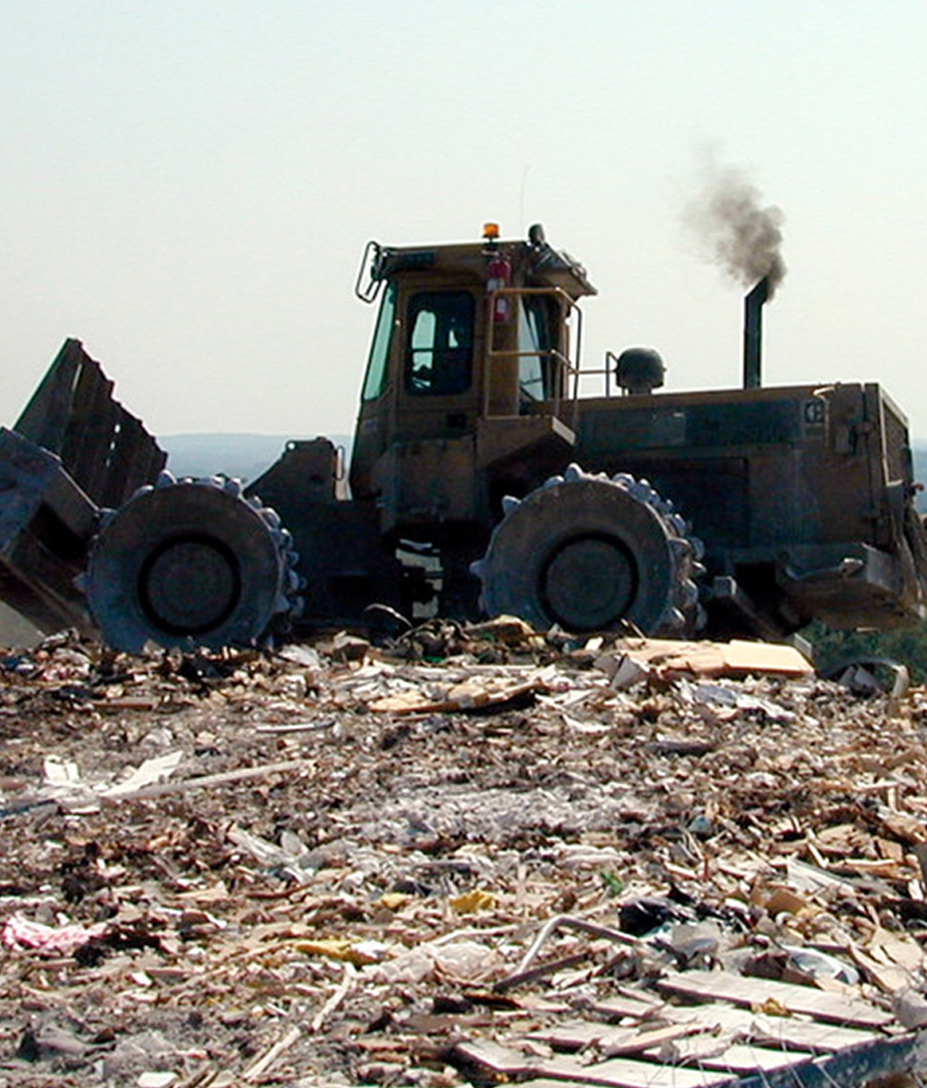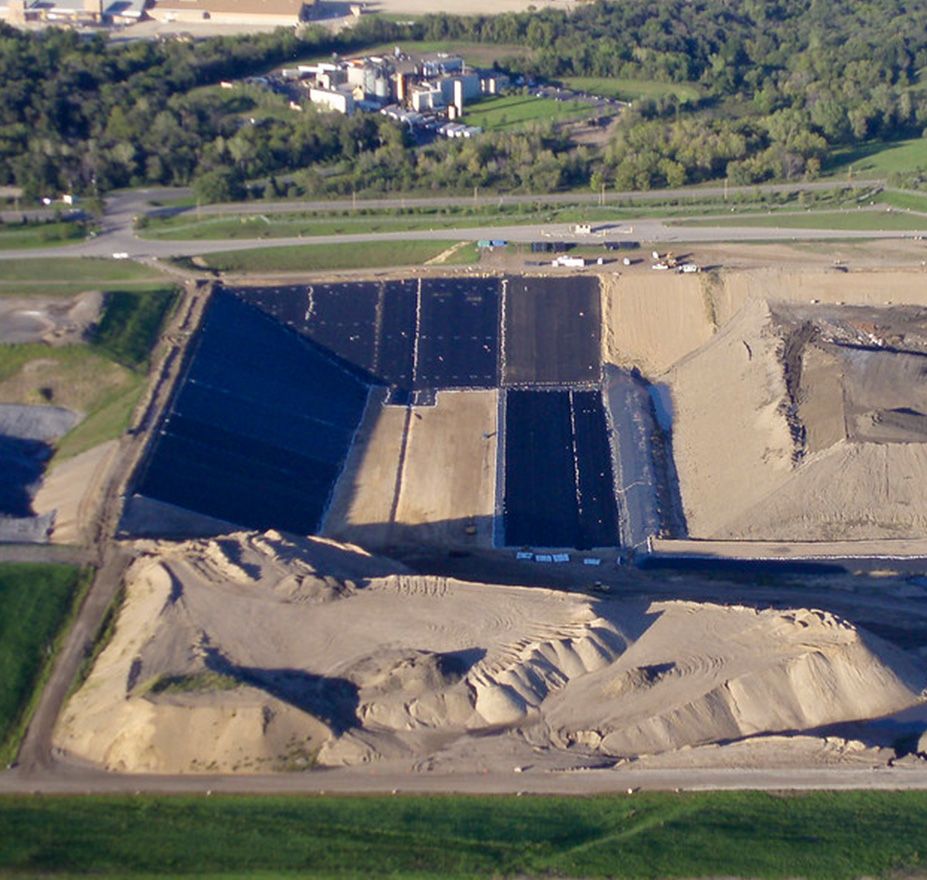Georgia, Inland Waterways, National Category
Startup Uses Drone for Cleaning Water, Collecting Data


The U.S. produced approximately 268 million tons of municipal solid waste (MSW) in 2017, or 4.51 pounds per person per day. This is a modest increase from the 4.4 pounds of MSW generated per person per day in 2014. Overall, 53% of waste is deposited in landfills, 25% is recycled, 10% is composted, and 13% is combusted for energy. The transport and disposal of MSW remains largely funded and managed by the private sector. However, the U.S. MSW management system faces a growing number of challenges such as plateauing recycling rates, emerging contaminants found in legacy landfills, and significantly changing global markets. Funding mechanisms are needed to invest in a nationwide solid waste infrastructure system that recognizes MSW as a resource to be utilized more so than waste to be disposed.
Download ReportThe Environmental Protection Agency (EPA) defines municipal solid waste (MSW) as, “everyday items such as product packaging, yard trimmings, furniture, clothing, bottles, cans, food, newspapers, appliances, electronics, and batteries” that are discarded from residential, commercial, or institutional sources. However, the EPA’s MSW definition does not include industrial, hazardous, or construction and demolition (C&D) waste, so this chapter will also exclude those.

Figure 1: Solid Waste Management Infrastructure and Processes
annual trash collection fee
was $55 per ton in 2019.
of the nation’s MSW
is burned to generate energy.
currently open.

In 2017, the EPA reported that Americans generated nearly 268 million tons of MSW, up from 262 million tons in 2015 and 251 million tons in 2010. This represents a modest increase in the per capita MSW generation rate from 4.45 to 4.51 pounds per person per day between 2010 to 2017, respectively4. In the last few decades, an increasingly larger portion of America’s MSW is diverted from landfills, and in 2017, 25% was recycled, 10% was composted, and nearly 13% was combusted via WTE processes. However, recent years have shown that the percentage of recycled and composted MSW materials has plateaued.
States play a leading role in ensuring federal regulations are met for operating and maintaining MSW and industrial waste landfills. However, some states may set and follow more stringent requirements. In absence of an approved state program, the federal requirements must be met by waste facilities. Regulations address common problems associated with landfills, including location restrictions, liner requirements, leachate collection and removal systems, groundwater monitoring, and closure and post-closure care expectations.
An ongoing concern for landfills and other solid waste management systems are emerging contaminants, which are chemicals that are not commonly monitored but have the potential to enter the environment and cause known or suspected adverse ecological and/or human health effects. They consist of per- and polyfluoroalkyl substances (PFAS), pharmaceuticals, pesticides, industrial chemicals, surfactants, personal care products, and more. These substances are consistently being found in groundwater, surface water, wastewater, drinking water, and some food sources.
Funding for operation and maintenance (O&M) of landfills and recycling facilities is generated through trash collection fees. The national average annual trash collection or tipping fee increased from about $48 per ton in 2016 to more than $55 per ton in 2019. Similarly, O&M efforts for WTE facilities are also self-funded and prove to be most cost-competitive in areas with limited available land and dense populations.

Landfills are often vulnerable to natural disasters such as hurricanes, earthquakes, and especially floods. Such events can have a large impact on groundwater conditions as well as the overall public health near landfills. Additionally, damage to other infrastructure systems such as roads, bridges, rail, the electric grid, inland waterways, and other systems causes interruption to MSW collection and disposal, which can lead to significant impacts on public health.
New processes can help reduce waste, particularly plastics. There are researchers and companies in the U.S. that are implementing practices such as pyrolysis to break down polystyrene waste into its foundational material, styrene. Others are looking to use engineered enzymes that can break down polyethylene terephthalate (PET) into purified terephthalic acid (PTA). The advantage of using depolymerization processes to break down PET compared to mechanical processes is that it extends the usefulness of the reprocessed PET, it can deal with the impurities that occur as a result of single-stream recycling, and it can be used with a variety of different types of plastics, not just the high-quality plastics like single-use bottles. However, the problem with these technologies is they are still very expensive alternatives, and the scale of facility with throughput capable of processing all the plastic discarded by Americans is not yet available. Therefore, some municipalities across the country are trying to reduce the number of plastics entering MSW landfills by implementing bans on single-use plastic. On a global scale, for example, since 2018, Starbucks has been working to replace all plastic straws with strawless lids and to develop a fully recyclable and compostable cup.
Pass legislation limiting the amount of packaging used in various industries, setting standards for the recyclability of materials (e.g., single-use plastics), and addressing the true cost of waste by implementing deposits on bottles and fees on plastic bags.
Strengthen domestic markets for recycled materials in the U.S. by supporting companies looking to build domestic reprocessing plastic facilities and reusing plastics.
Change the way Americans think of solid waste beyond “garbage” or “trash,” to understand that “waste is not waste until it is wasted.” The materials Americans routinely discard are potential resources.
Support research and invest in alternatives for the use of waste as resources, such as aerobic digesters and plasma gasification.
Oppose federal legislation that would ban the interstate movement of municipal solid waste (MSW) to regional solid waste facilities designed in accordance with state and federal regulations, recognizing that such transport may be appropriate and beneficial in regional solid waste planning efforts.
Encourage Congress to list polyfluoroalkyl substances (PFAS) as hazardous substances in Superfund.
U.S. Environmental Protection Agency, Facts and Figures about Materials, Waste and Recycling, “Guide to the Facts and Figures Report about Materials, Waste and Recycling.”
U.S. Environmental Protection Agency, “Municipal Solid Waste Landfills.”
Commonwealth of Massachusetts, “Municipal Waste Combustors.”
U.S. Environmental Protection Agency, Facts and Figures about Materials, Waste and Recycling, “Advancing Sustainable Materials Management: 2017 Fact Sheet Assessing Trends in Material Generation, Recycling, Composting, Combustion with Energy Recovery and Landfilling in the United States,” November 2019.
U.S. Environmental Protection Agency, Facts and Figures about Materials, Waste and Recycling, “Advancing Sustainable Materials Management: 2017 Fact Sheet Assessing Trends in Material Generation, Recycling, Composting, Combustion with Energy Recovery and Landfilling in the United States,” November 2019.
U.S. Environmental Protection Agency, “Frequent Questions about Landfills.”
U.S. Environmental Protection Agency, Landfill Methane Outreach Program (LMOP), “Landfill Technical Data.”
South Carolina Department of Health and Environmental Control, “How Landfills Work.”
Environmental Research & Education Foundation, “Waste & Recycling for Dummies.”
U.S. Energy Information Administration, Independent Statistics & Analysis, “Today in Energy,” April 8, 2016.
U.S. Bureau of Labor Statistics, Green Jobs, “Careers in Recycling.”
U.S. Bureau of Labor Statistics, “Quarterly Census of Employment and Wages.”
Environmental Research & Education Foundation, “Waste & Recycling for Dummies.”
U.S. Environmental Protection Agency, America Recycles, “U.S. National Recycling Goal.”
Environmental Research & Education Foundation, “Per- and Polyfluoroalkyl Substances (PFAS) – List of Scientific and Technical Studies Related to Solid Waste.”
U.S. Environmental Protection Agency, PFOA, PFOS and Other PFASs, “Basic Information on PFAS.”
U.S. Environmental Protection Agency, PFOA, PFOS and Other PFASs, “EPA Actions to Address PFAS.”
Environmental Research & Education Foundation, “Analysis of MSW Landfill Tipping Fees, April 2019 Analysis.”
Environmental Research & Education Foundation, “Waste & Recycling for Dummies.”
Bloomberg Green, “China Upended the Politics of Plastic and the World Is Still Reeling.”
Guardian, “Huge rise in US plastic waste shipments to poor countries following China ban.”
U.S. Environmental Protection Agency, America Recycles, “National Recycling Strategy,” draft October 5, 2020.
Resource Recycling, Inc., Plastics Recycling Update, “Chinese firms open up on their U.S. recycling plans,” April 4, 2018.
Thiounn T and Smith RC. Journal of Polymer Science, 58.10: 1347-1364, “Advances and approaches for chemical recycling of plastic waste,” April 20, 2020.
Starbucks Corporation, “Starbucks Strawless Lids Now Available Across the U.S. and Canada,” September 10, 2020.
Cover Photo:“Sunset at Dyer Park Over Grassy Field Previously a Landfill” by Captain Kimo is licensed under CC BY-NC-ND 2.0
